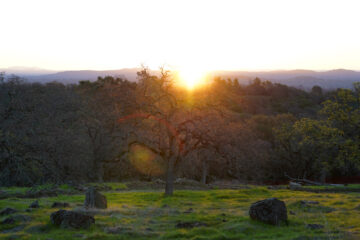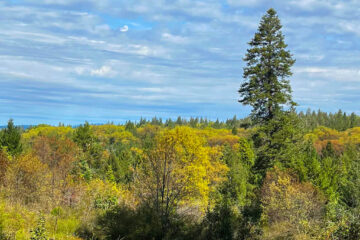11/19/2010
Placer Land Trust Protects Mark Twain’s Jumping Frog
California Red-Legged Frog Habitat Permanently Protected
Placer Land Trust recently partnered with Westervelt Ecological Services to permanently protect a 52-acre property known as the Big Gun Preserve, located near Foresthill in the Middle Fork American River watershed, containing the largest Sierra Nevada population of California red-legged frogs.
The California red-legged frog (Rana draytonii) first jumped into fame in Mark Twain’s short story, The Celebrated Jumping Frog of Calaveras County, published in 1865. Following Twain’s story, the famous California red-legged frogs have been the unofficial mascot of Calaveras County, where frog-jumping is an annual tradition at the County fair.
One hundred years after his death, Twain’s soon-to-be-released autobiography, “Autobiography of Mark Twain, Volume 1”, is topping the best-seller list at Amazon and Barnes & Noble before even reaching the official release date. However, during the same one hundred years since Twain’s death, populations of the California red-legged frog have declined drastically, largely due to the destruction of wetland habitat for residential development. The frogs were listed as threatened under the Endangered Species Act by the U.S. Fish and Wildlife Service (USFWS) in 1996, and are also listed as a species of special concern by the California Department of Fish & Game.
“The California red-legged frog has a special place in our history and our natural world,” said Placer Land Trust Executive Director Jeff Darlington. “Protection of the Big Gun Preserve is particularly important because this property contains the largest known population of the frogs in the Sierra Nevada region.”
Working with the landowner, Westervelt Ecological Services, and the USFWS, Placer Land Trust has recorded a conservation easement on 48 acres of the Big Gun Preserve to forever protect the property as habitat for the California red-legged frog. Preservation and management of the property will greatly contribute to the long-term survival and recovery of the frogs in the region.
“By working with Placer Land Trust to protect this property, we are helping USFWS meet stated recovery goals for this species,” said Lucy Triffleman, Conservation Planner with Westervelt Ecological Services. “Through this three-way partnership between a private company, a non-profit land trust, and a federal agency, tangible species conservation and recovery is happening, moving us one step further on the path to saving this animal from extinction.”
The Big Gun Preserve features several ponds, ponderosa pine, mixed conifer woodlands, chaparral, and riparian corridors. Despite the severe degradation during the Gold Rush, this site today serves as ideal habitat for the frogs and an assortment of other Sierra Nevada foothill wildlife and plant species.
A conservation easement is a voluntary legal agreement between a land owner and a land trust that permanently limits the uses of the property in order to preserve its important conservation values and public benefits (such as wildlife protection). The conservation easement permanently prohibits development and other land uses that might impact species.
“Placer Land Trust has been pleased to work with Westervelt Ecological Services to protect the Big Gun Preserve,” said Darlington, “The protection of this one single property is the most significant step we can take to save the California red-legged frog.”


